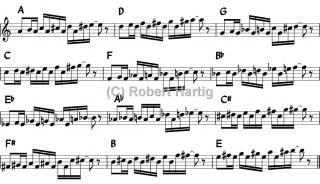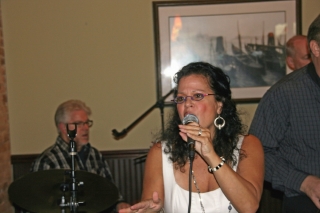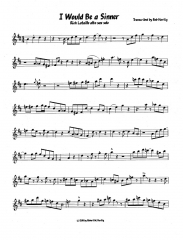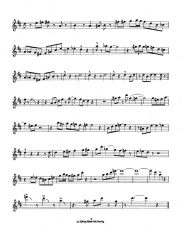(Continued from part 2.)
For a couple of years after I graduated from high school, I cast about with no certain direction. I worked a series of odds-and-ends jobs, none with any promise, and lived alternately with my parents, in a tiny shotgun house in Eastown, and in a former chicken coop converted into a rental home out in the countryside of Cascade. (Don’t knock it till you’ve tried it! The place was really nice for that time in my life.)
The one constant in my life was music. But in those days, I had largely set aside my horn in favor of my acoustic guitar, which I had taught myself to play. I was hugely into Jethro Tull and wanted nothing more than to be another Ian Anderson. So I was doing my best to develop as a singer/songwriter.
It was the sax, though, that opened the door to some key musical friendships. In those days, I was hanging with my buddies Perry Werchowsky and Scott Smith. It was these guys who in different ways spurred me on to learn more about what I was doing.
The three of us used to get together frequently at Perry’s house and jam, with Perry playing piano, Scott on the guitar, and, of course, me on the alto sax. Perry was studying with veteran jazz keyboardist Eddie Russ, and Scott had begun to take music classes at Grand Rapids Junior College. Scott was constantly talking about the latest musical concepts he was learning in music theory class. Triads, inversions, augmented chords, secondary dominants, cadences … all fascinating to hear about, and frankly, I was starting to feel a bit jealous. I wanted to know about that stuff!
When I told my parents that I thought I might like to study music, they leaped at my mere mention of the idea. A whirlwind of college visits, applications, and financial aid forms ensued, and when the dust finally settled, I found myself sitting in the afternoon jazz band at Aquinas College under the directorship of Dr. Bruce Early.
Bruce put me in the lead alto chair, but he made it plain to me that the arrangement was only temporary. Someone else would be playing first chair, and once that person arrived in a week or two, I would be demoted.
“Right,” I thought. “Just wait till you hear what I can do!” Rehearsals got underway, me playing with all the gusto and confidence that comes from either great talent or monumental ignorance. From the impression Bruce was doing of being utterly unimpressed, I knew I was secretly blowing him away. He just wasn’t letting on.
Then one afternoon as I was assembling my horn for rehearsal, into the room walked another saxophonist named Dan Bryska. I had heard Dan play before; he had sat in on a few Formal Aires gigs in months past. I felt a bit nervous. Here was my replacement, apparently, and I knew he was good.
Dan put together his horn and began to warm up with a series of bebop licks. In fifteen seconds, the guy blew lines through his sax that I had never dreamed of. And like that, my cocky attitude evaporated. Geeze, Dan wasn’t just better than me, he was a lot better. There weren’t even grounds for comparison.
Until now I had been a small fish in a smaller pond, and I had made the mistake of believing the people who told me what a great player I was. Now here was the truth, staring me in the face. I was a novice, so green that I didn’t even know how badly I sucked. But Dan had just given me a clue. It was a humbling experience, but it was good for me. It suggested that if I wanted to become anywhere near as good a player as Dan and some of the other guys in the band, I was going to have to work at it.
In other words, practice. What a novel concept!
But practice what? I wasn’t sure. I had begun to take jazz improvisation lessons with Bruce Early, but my ears just couldn’t wrap themselves around the complexities of even the simplest jazz harmony. A ninth slapped on top of a minor seventh chord didn’t sound pretty to me; it sounded wrong.
I forget how I stumbled upon Jerry Coker’s renowned book Patterns for Jazz, but I’ll never forget the impact it had on me. By then I was two years into music school, and I was slowly developing, but I think I was mostly just a source of frustration for my saxophone instructor. Then along came Coker’s book. I took it to school with me, hit a practice room, and began to work on a pattern that consisted of major triads ascending and descending chromatically.
“Hmmm,” I thought, “I wonder if I can memorize this.” I took up the challenge, persevered at it, and succeeded. And light began to dawn for me. I could do this stuff! If I practiced, I could become good. Maybe even really good.
I was hammering away on my triads one afternoon when the door to my practice room suddenly flung open and my sax instructor, Fred Bunch, rushed in. “YES!” he yelled. “That’s it! That’s it! Keep doing it!!!”
The man had a wild look in his eyes, and I had left my pepper spray at home. But I felt more inspired than nervous. After all those years of misfiring, it looked like I was finally on the right track.
(To be continued.)















